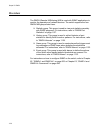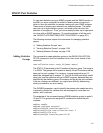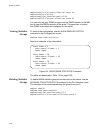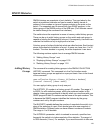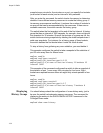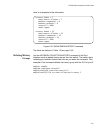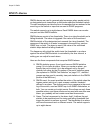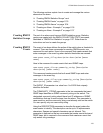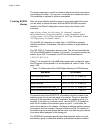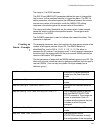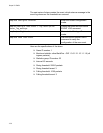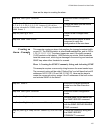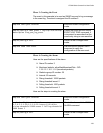AT-9000 Switch Command Line User’s Guide
1133
The following sections explain how to create and manage the various
elements of an alarm:
“Creating RMON Statistics Groups” next
“Creating RMON Events” on page 1133
“Creating RMON Alarms” on page 1134
“Creating an Alarm - Example 1” on page 1135
“Creating an Alarm - Example 2” on page 1137
Creating RMON
Statistics Groups
The port of an alarm must have an RMON statistics group. Statistics
groups are created with the RMON COLLECTION STATS command,
described in “RMON Port Statistics” on page 1127. Refer there for
instructions on how to create the groups.
Creating RMON
Events
The event of an alarm defines the action of the switch when a threshold is
crossed. There are three commands for creating RMON events, one
command for each action. Here is the command that creates events that
enter messages in the event log when statistic thresholds are crossed:
rmon event
event_id
log description
description
[owner
owner
]
Here is the command to create events that send SNMP traps:
rmon event
event_id
trap
community_string
[description
description
] [owner
owner
]
This command creates events that both send SNMP traps and enter
messages in the event log:
rmon event
event_id
log trap
community_string
[description
description
] [owner
owner
]
The EVENT_ID parameter is a value from 1 to 65535 that uniquely
identifies the event.
The COMMUNITY_STRING parameter in the two commands that send
SNMP traps identifies an SNMP community string on the switch. The
designated community string should have host IP addresses of SNMP
workstations that are to receive traps from the alarm. This parameter is
case sensitive, and the community string must already exist on the switch.
You can specify only one community string.
Using the DESCRIPTION parameter to describe the event makes the
event easier to identify. The description can be up to 20 alphanumeric
characters. Spaces and special characters are not allowed. This
parameter is optional on the two commands that create events that send
SNMP traps, but is required in the command that creates an event that
only enters a log message.




